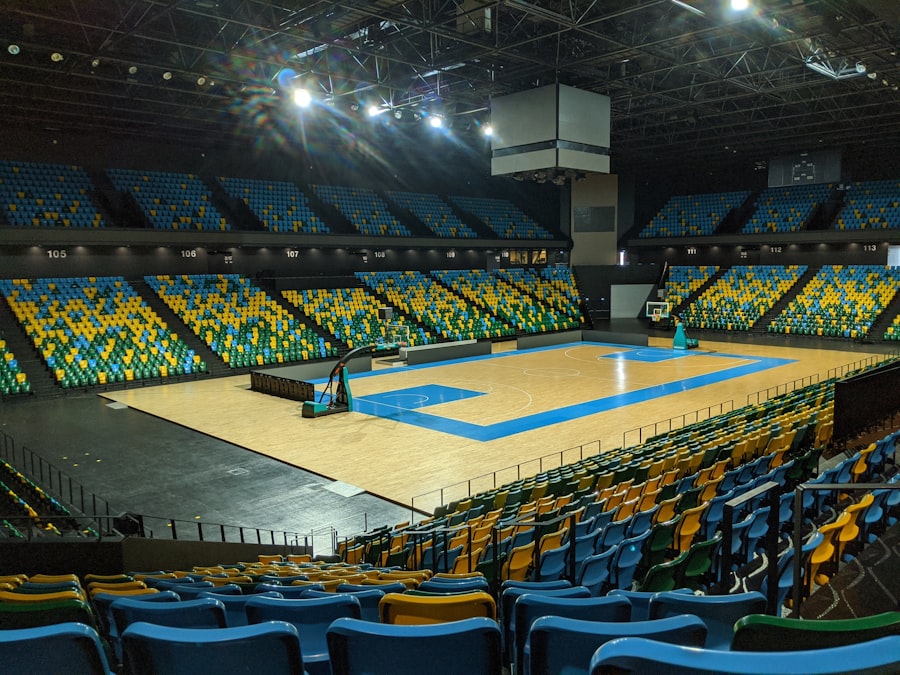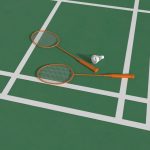The Science of Bouncing Ball
Description
The phenomenon of bouncing is a fascinating interplay of physics principles, primarily governed by Newton’s laws of motion. When an object, such as a ball, is dropped from a height, it accelerates towards the ground due to gravity. Upon impact with a surface, the ball deforms slightly, storing potential energy in the form of elastic energy.
This energy is then released as the ball returns to its original shape, propelling it back into the air. The height to which the ball rebounds is determined by several factors, including the initial drop height, the material properties of the ball and the surface it strikes, and the energy lost during the impact. The mechanics of bouncing can be described using the concept of momentum.
When the ball hits the ground, it experiences a change in momentum, which is transferred to the surface. The conservation of momentum dictates that the total momentum before and after the collision remains constant, assuming no external forces act on the system. However, in real-world scenarios, some energy is always lost to sound, heat, and internal friction within the materials involved.
This loss of energy is what ultimately limits the height of the bounce, leading to a gradual decrease in bounce height with each successive drop.
Key Takeaways
- The height of a bounce is determined by the ball’s initial velocity and the force of gravity
- Factors such as air pressure, surface material, and elasticity can affect the height of a bounce
- Elasticity is the ability of a material to return to its original shape after being stretched or compressed
- Air pressure can affect the bounce of a ball by changing the amount of force exerted on the ball
- The surface material of a ball can affect its bounce by absorbing or reflecting energy from the impact
Factors Affecting Bounce Height
Several factors influence how high a ball will bounce after being dropped. One of the most significant is the initial height from which it is dropped. The greater the height, the more gravitational potential energy is converted into kinetic energy as the ball falls.
This increased kinetic energy results in a higher rebound, provided that other conditions remain constant. For instance, if a basketball is dropped from a height of 10 feet compared to one dropped from 5 feet, the former will generally bounce higher due to its greater initial energy. Another critical factor is the material properties of both the ball and the surface it impacts.
Different materials have varying degrees of elasticity, which affects how much energy is retained during a bounce. For example, a rubber ball will typically bounce higher than a tennis ball because rubber has a higher coefficient of restitution—a measure of how much kinetic energy remains after a collision. Additionally, the surface material plays a crucial role; a hard surface like concrete will allow for a higher bounce compared to a soft surface like grass or carpet, which absorbs more energy upon impact.
Elasticity and Bounce

Elasticity is a fundamental property that describes how materials deform under stress and return to their original shape when that stress is removed. In the context of bouncing balls, elasticity directly influences how high a ball can rebound after hitting a surface. The coefficient of restitution (COR) quantifies this relationship; it is defined as the ratio of the velocity of separation to the velocity of approach during a collision.
A COR value close to 1 indicates that very little kinetic energy is lost during the bounce, while a value significantly less than 1 indicates substantial energy loss. Different types of balls exhibit varying degrees of elasticity based on their construction materials. For instance, a basketball is designed with an outer layer that provides excellent elasticity, allowing it to maintain its shape and bounce effectively on hard surfaces. In contrast, a beach ball, while also elastic, may not bounce as high due to its larger surface area and lower density, which can lead to greater air resistance and energy loss during impact. Understanding these material properties helps engineers design sports equipment that maximizes performance while adhering to safety standards.
The Role of Air Pressure
| Aspect | Measurement |
|---|---|
| Air Pressure at Sea Level | 1013.25 millibars |
| Effects on Weather | High pressure = fair weather, low pressure = stormy weather |
| Units of Measurement | Millibars (mb) or inches of mercury (inHg) |
| Instrument | Barometer |
Air pressure plays an essential role in determining how well a ball bounces. The internal pressure of a ball affects its stiffness and overall elasticity. For example, a properly inflated basketball will have a higher internal air pressure than one that is under-inflated.
This increased pressure allows for better energy transfer during impact with the ground, resulting in a higher bounce. Conversely, an under-inflated ball will deform more upon impact, absorbing more energy and leading to a lower rebound height. In addition to affecting bounce height, air pressure also influences how balls behave during play.
In sports like soccer or football, players often adjust the air pressure in their balls to achieve desired performance characteristics. A firmer ball may travel faster and have less drag due to reduced deformation upon kicking or striking, while a softer ball may provide better control and grip for dribbling or passing. Understanding these dynamics allows athletes and coaches to optimize their equipment for specific playing conditions.
Surface Material and Bounce
The type of surface on which a ball bounces significantly impacts its rebound characteristics. Hard surfaces such as concrete or hardwood floors provide minimal energy absorption during impact, allowing for maximum bounce height. In contrast, softer surfaces like grass or sand absorb more energy upon contact with the ball, resulting in lower bounce heights.
This difference can be observed in various sports; for instance, basketball courts are typically made from hardwood to facilitate high bounces and fast-paced play. Moreover, surface texture also plays a role in how balls interact with their environment during bounces. A rough surface may create more friction between the ball and ground, potentially affecting its spin and trajectory after bouncing.
In contrast, smooth surfaces allow for cleaner rebounds with less energy loss due to friction. This interplay between surface material and texture can be critical in sports where precision and control are paramount, such as tennis or table tennis.
The Science of Spin

Spin is another crucial factor that influences how a ball behaves when it bounces. When a player imparts spin on a ball—whether through techniques like topspin or backspin—it alters not only its trajectory but also its interaction with surfaces upon impact. For example, topspin causes a ball to dip quickly after being hit, resulting in a steeper angle when it strikes the ground.
This can lead to increased friction with the surface and potentially lower bounce heights compared to a ball hit without spin. The Magnus effect explains how spin affects a ball’s flight path and behavior upon bouncing. As a spinning ball moves through the air, it creates differences in air pressure around it due to its rotation.
This pressure differential can cause the ball to curve or dip unexpectedly during flight. When such a ball strikes the ground, its spin can influence how it rebounds; for instance, backspin may cause it to “check” or stop quickly after hitting the ground rather than bouncing high. Understanding these principles allows athletes to use spin strategically in various sports to gain an advantage over opponents.
Bouncing Ball in Sports
The science behind bouncing balls has profound implications in various sports disciplines. In basketball, for instance, players rely on precise control over their dribbling techniques to maintain possession while navigating through defenders.
Coaches often emphasize drills that enhance players’ understanding of bounce dynamics to improve their overall performance on the court. Similarly, in tennis, players must account for both the speed and spin of their shots when anticipating their opponent’s return. A well-executed topspin shot can result in a high bounce that forces opponents into difficult positions on the court.
Players who master these techniques can manipulate their shots’ behavior upon bouncing to create strategic advantages during matches. The design of tennis balls also reflects these principles; they are constructed with specific materials and pressures to optimize their performance on different court surfaces.
Real-world Applications of Bouncing Ball Science
The principles governing bouncing balls extend beyond sports into various real-world applications across multiple fields. In engineering and materials science, understanding elasticity and bounce dynamics informs product design across industries—from automotive components designed for shock absorption to consumer goods like footwear that require optimal cushioning properties. For instance, car manufacturers utilize knowledge about material elasticity when designing suspension systems that enhance ride comfort by minimizing vibrations from road irregularities.
In education and research settings, experiments involving bouncing balls serve as practical demonstrations of fundamental physics concepts such as energy conservation and momentum transfer. These experiments can engage students by providing hands-on experiences that illustrate theoretical principles in action. Additionally, advancements in technology have led to innovations such as smart balls equipped with sensors that measure bounce height and spin rate in real-time—offering valuable data for athletes seeking to refine their skills.
The study of bouncing balls also finds relevance in fields like biomechanics and rehabilitation therapy. Understanding how different surfaces affect bounce dynamics can aid in designing rehabilitation programs for athletes recovering from injuries or surgeries by tailoring exercises that promote strength and coordination while minimizing impact stress on joints. In summary, the science behind bouncing balls encompasses an intricate web of physical principles that govern their behavior across various contexts—from sports performance to engineering applications—highlighting its significance in both theoretical exploration and practical implementation.
If you’re a fan of bouncing ball games, you may also enjoy reading about the intense competition in a guitar band rock battle. Check out this article to learn more about the thrilling showdown between musical talents.
FAQs
What is a bouncing ball?
A bouncing ball is a small, round object that is designed to rebound off of surfaces when dropped or thrown.
What are bouncing balls made of?
Bouncing balls are typically made of rubber or a similar elastic material that allows them to compress and then quickly regain their original shape when they come into contact with a surface.
How does a bouncing ball work?
When a bouncing ball is dropped or thrown, it compresses upon impact with a surface, storing potential energy. This potential energy is then converted into kinetic energy as the ball rebounds off the surface, causing it to bounce back up.
What are the different types of bouncing balls?
There are various types of bouncing balls, including super bouncy balls, rubber balls, and high bounce balls. Each type has different levels of elasticity and bounce height.
What are the uses of bouncing balls?
Bouncing balls are commonly used as toys for children, in sports such as basketball and tennis, and in various physics experiments to demonstrate the principles of energy and motion.





